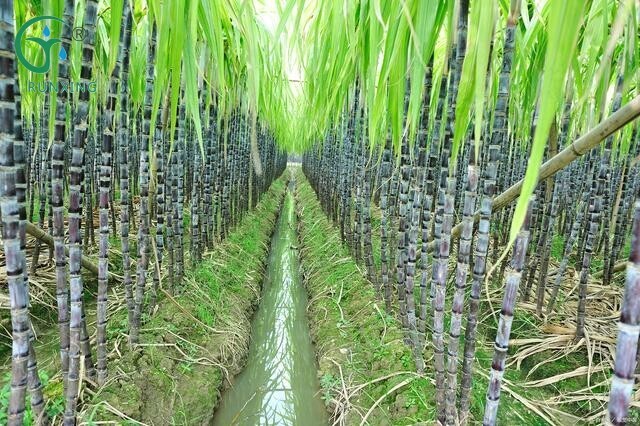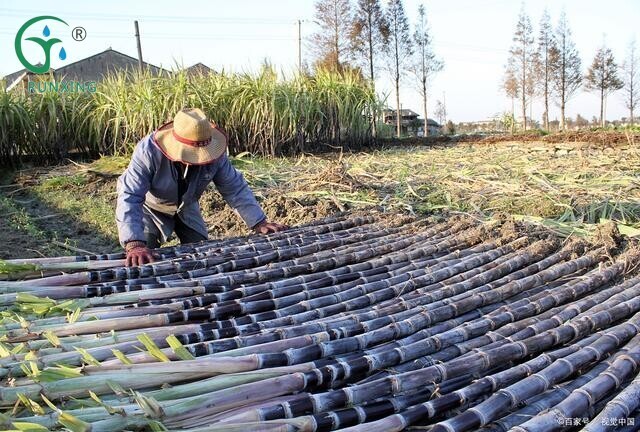Brazilian Sugarcane Cultivation and Drip Irrigation Technology
Does Brazilian Sugarcane Cultivation Require Drip Irrigation Facilities?
In Brazil, sugarcane, as a crucial economic crop, has particularly critical irrigation needs during its cultivation process. To ensure the healthy growth and high yield of sugarcane, adopting drip irrigation facilities is highly necessary. Drip irrigation technology not only improves irrigation efficiency and reduces water waste but also minimizes soil erosion and salinization through precise irrigation, while simultaneously lowering the incidence of pests and diseases. Additionally, new regulations issued by Brazil's environmental agency Ibama recommend the use of drip irrigation and other precision pesticide application methods for specific crops such as sugarcane to avoid pesticide drift risks and protect the ecological environment.

What Drip Irrigation Equipment is Needed?
Drip irrigation systems primarily consist of water supply devices, water conveyance pipelines, and drip irrigation components.
Water Supply Devices: These include water sources, water pumps, flow and pressure regulators, fertilizer tanks, and fertilizer injectors. The water source can be existing pools, wells, or simple water storage tanks. To ensure the transportation and dripping of irrigation water, the water entering the drip irrigation pipelines must have a certain pressure, generally requiring a water delivery pressure of 0.1-0.2 MPa.
Water Conveyance Pipelines: These pipelines direct water from the water supply devices to the drip irrigation areas such as greenhouses. For sugarcane fields, the water conveyance pipelines are generally divided into main pipes and branch pipes, with drip irrigation tubes directly installed on the branch pipes. Filters need to be installed on the water conveyance pipelines to prevent clogging from rust and sediment, and pressure gauge valves and fertilizer mixing tanks should also be installed.
Drip Irrigation Components: These mostly utilize drip irrigation tapes with thicknesses ranging from 0.8-1.2 mm and diameters of 16, 20, 25, 32, 40, 50 mm, etc. The drip irrigation tape hose has a row of 0.5-0.7 mm diameter drip holes on both the left and right sides, with a hole spacing of 25 cm on each side, and the drip holes on both sides are staggered. When the water pressure reaches 0.02-0.05 MPa, the hose functions to transport water, dripping it into the soil around the sugarcane roots through the drip holes on both sides.
How to Lay and Install?
The laying and installation of drip irrigation systems can be broadly divided into the following steps:
Digging Trenches: Excavate trenches according to the requirements for equipment installation, external pressure bearing, and winter water drainage. The trenches should be as narrow and straight as possible.
Installing Pipelines: Inspect the piping and fittings, eliminating products with deformations, cracks, or damage. The horizontal pipes should be well-combined with the trench beds, and the installation angle of the vertical pipes should meet the design requirements.
Pressure Testing: Test the tightness of the pipeline connections, determine the test pressure according to the system's designed working pressure, and conduct pressure and equilibrium tests.
Trench Backfilling: After the pipeline pressure test is qualified, first backfill with about 10 cm of sandy soil, then compact it in layers.
Installing Drip Irrigation Tapes: Clear the mud and debris inside the pipes to prevent clogging of the drip irrigation tapes. The height of the drip irrigation tapes should be flush with the ground to ensure uniform drip irrigation.
Installing Pressurization Equipment: Install water pumps and constant pressure water supply devices to ensure stable pressure in the drip irrigation system.
System Commissioning: After installation, commission and test the entire system to ensure its normal operation.
How Much Water is Needed and How to Control It?
The water consumption for drip irrigation of sugarcane depends on various factors such as the growth stage of the sugarcane, soil conditions, and climatic conditions. Generally, each drip irrigation session lasts for 4 hours, consuming approximately 120 m³/hm², and with a total of 5 drip irrigations during the entire growth period, the total water consumption is approximately 600 m³/hm².
Controlling water consumption can be achieved by adjusting the pressure and flow rate of the drip irrigation system. The flow and pressure regulators in the water supply devices can precisely control the delivery speed and drip rate of irrigation water, ensuring water is supplied as needed and avoiding waste.
How to Better Cultivate Sugarcane?
Here are some tips to improve sugarcane cultivation efficiency:
Site Selection and Soil Preparation: Choose fertile soil, deep soil layers, and well-drained sandy loam or loam soil with a pH value between 6.5-7.5. Before planting, conduct deep plowing and tillage to loosen the soil, increase aeration and water retention.
Variety Selection: Select varieties with high sugar content and yield, such as the Guitang series, based on their use. Also, consider the adaptability of the varieties to the local climate and soil conditions.
Cultivation Management: Reasonable planting density, stem preparation, and disinfection treatment can improve the germination rate and survival rate of sugarcane. After planting, regularly conduct middle tillage, weed control, fertilization, and irrigation to ensure the water and nutrients required for sugarcane growth.
Pest and Disease Control: Adopt a combination of biological and chemical control methods to timely prevent and control sugarcane pests and diseases, reducing yield losses.
Harvesting and Storage: Harvest when the lower leaves of the sugarcane stalks turn yellow and the stalk sugar content reaches its peak. Mechanical harvesting can improve harvesting efficiency, but care must be taken to adjust the harvesting equipment to avoid damaging the sugarcane stalks.

By adopting drip irrigation technology and scientific cultivation management, Brazilian sugarcane cultivation can achieve high yields and efficiency while protecting the ecological environment and promoting sustainable agricultural development.
If you have any needs, please contact us.
About Us
We are dedicated to offering innovative, water-saving, and labor-saving irrigation solutions for agriculture worldwide. Our focus on quality and continuous innovation drives the development and progress of the industr
LOGO
This stunning beach house property is a true oasis, nestled in a serene coastal community with direct access to the beach.
Opening Hours
Monday - Friday : 9AM to 5PM
Sunday: Closed
Closed during holidays
Contact
+18888888888
hezuo@eyingbao.com123 West Street, Melbourne Victoria 3000 Australia
